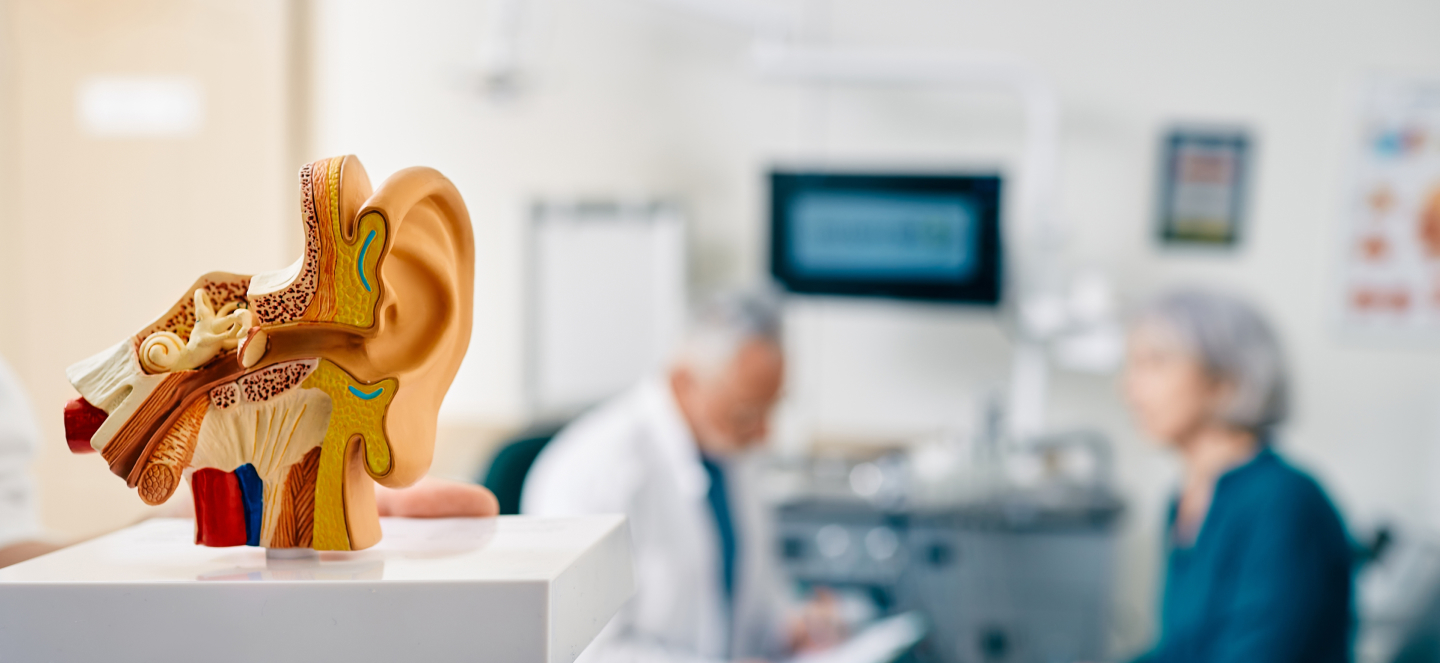Ear & Audiology Services
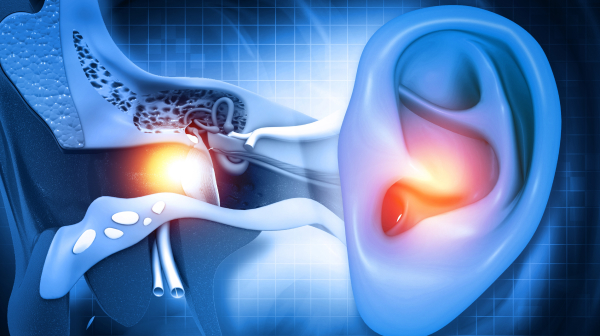
Ear TubesEar tubes or tympanostomy tube placement, the second most common surgery for children in the U.S., are small tubes placed in a tiny hole in the ear drum to equalize pressure or drain fluid from the middle of the ear. Ear tubes replace the function of the Eustachian tube, which runs from the middle of the ear to the back of the nose above the throat.
Family ENT of Georgetown places ear tubes if a child has frequent ear infections, if there is fluid causing hearing loss or if the fluid is not responsive to medical therapy or watchful waiting
Ear tubes or tympanostomy tube placement, the second most common surgery for children in the U.S., are small tubes placed in a tiny hole in the ear drum to equalize pressure or drain fluid from the middle of the ear. Ear tubes replace the function of the Eustachian tube, which runs from the middle of the ear to the back of the nose above the throat.
Family ENT of Georgetown places ear tubes if a child has frequent ear infections, if there is fluid causing hearing loss or if the fluid is not responsive to medical therapy or watchful waiting
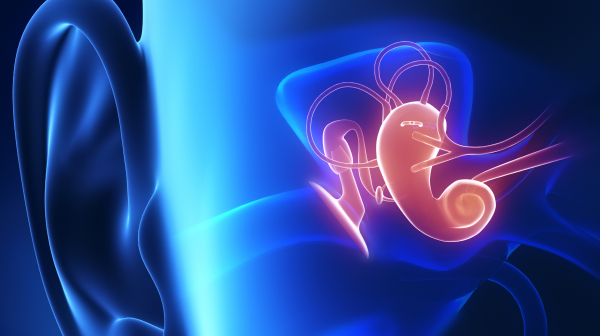

Eustachian tube dilationThe Eustachian tube is a narrow passage leading from the pharynx to the middle ear and is responsible for equalizing pressure on each side of your eardrum. This function provides us with balance when going about our everyday lives.
These tubes also ventilate the middle ear, help drain secretions and protect the middle ear from disease. When they are not functioning the way they should, Eustachian Tube Balloon Dilation, or ETBD, can provide relief. In this procedure, a small balloon is inserted through the nose, which clears a path for mucus and trapped air. Once the balloon is removed, the Eustachian tube is restored to normal function.
The Eustachian tube is a narrow passage leading from the pharynx to the middle ear and is responsible for equalizing pressure on each side of your eardrum. This function provides us with balance when going about our everyday lives.
These tubes also ventilate the middle ear, help drain secretions and protect the middle ear from disease. When they are not functioning the way they should, Eustachian Tube Balloon Dilation, or ETBD, can provide relief. In this procedure, a small balloon is inserted through the nose, which clears a path for mucus and trapped air. Once the balloon is removed, the Eustachian tube is restored to normal function.
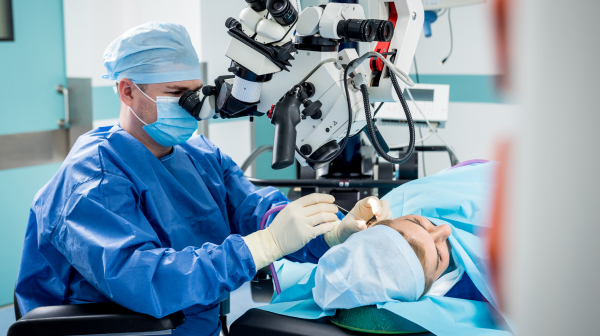

Eardrum Repair / TympanoplastyHearing loss lasting for some time could be caused by a hole in the eardrum that doesn’t heal. There is also a chance of ear infections, especially when water or dirt gets into the ear, and these will make the hearing worse. That is when ear microsurgery (Tympanoplasty) might become an option for some patients. The hole in the eardrum will be closed with an operation under general anesthesia, using the patient’s own tissue, which is taken from a cut in the skin near the ear. The patch or ’graft’ will grow together with the remaining eardrum over a couple of weeks.
Hearing loss lasting for some time could be caused by a hole in the eardrum that doesn’t heal. There is also a chance of ear infections, especially when water or dirt gets into the ear, and these will make the hearing worse. That is when ear microsurgery (Tympanoplasty) might become an option for some patients. The hole in the eardrum will be closed with an operation under general anesthesia, using the patient’s own tissue, which is taken from a cut in the skin near the ear. The patch or ’graft’ will grow together with the remaining eardrum over a couple of weeks.
Face, Mouth, & Throat Services


HoarsenessWe rely on our voices every day to interact with others, and a healthy voice is critical for clear communication. But just as we walk without thinking about it, we usually speak without thinking how our body makes it happen. However, knowing how we make sound is useful to maintaining the health and effectiveness of our voices.
The larynx (or voice box) sits on top of the windpipe. It contains two vocal folds (also known as vocal cords) that open during breathing and close during swallowing and voice production. When we produce voice, the airstream passes between the two vocal folds that have come together. These folds are soft and are set into vibration by the passing airstream. They vibrate very fast from 100 to 1000 times per second, depending on the pitch of the sound we make. Pitch is determined by the length and tension of the vocal folds, which are controlled by muscles in the larynx.
Voice box tumors can be either benign (not cancer) or malignant (cancer). Benign tumors, such as polyps or nodules, can be generally removed without growing back or spreading to other parts of the body. Malignant growths, on the other hand, can regenerate and spread cancer cells to other parts of the body. The most effective measure a patient can take is early examination and detection.
Among the main causes that can lead to voice box tumors are (primarily) smoking, alcohol use, nutritional deficiencies, genetic predisposition and other viral factors. The most common symptoms are hoarseness, painful swallowing, earache or development of a mass in the neck.
We rely on our voices every day to interact with others, and a healthy voice is critical for clear communication. But just as we walk without thinking about it, we usually speak without thinking how our body makes it happen. However, knowing how we make sound is useful to maintaining the health and effectiveness of our voices.
The larynx (or voice box) sits on top of the windpipe. It contains two vocal folds (also known as vocal cords) that open during breathing and close during swallowing and voice production. When we produce voice, the airstream passes between the two vocal folds that have come together. These folds are soft and are set into vibration by the passing airstream. They vibrate very fast from 100 to 1000 times per second, depending on the pitch of the sound we make. Pitch is determined by the length and tension of the vocal folds, which are controlled by muscles in the larynx.
Voice box tumors can be either benign (not cancer) or malignant (cancer). Benign tumors, such as polyps or nodules, can be generally removed without growing back or spreading to other parts of the body. Malignant growths, on the other hand, can regenerate and spread cancer cells to other parts of the body. The most effective measure a patient can take is early examination and detection.
Among the main causes that can lead to voice box tumors are (primarily) smoking, alcohol use, nutritional deficiencies, genetic predisposition and other viral factors. The most common symptoms are hoarseness, painful swallowing, earache or development of a mass in the neck.


LaryngitisCall our office for more information
Call our office for more information


Laryngopharyngeal Reflux (LPR)Call our office for more information
Call our office for more information


Tonsillectomy & AdenoidectomyTonsils and adenoids are similar to the lymph nodes or glands found in the neck, groin, and armpits. Tonsils are the two round lumps in the back of the throat. Adenoids are high in the throat behind the nose and the roof of the mouth (soft palate) and are not visible through the mouth or nose without special instruments.
Bacterial infections of the tonsils, especially those caused by streptococcus, are first treated with antibiotics. Removal of the tonsils (tonsillectomy) and/or adenoids (adenoidectomy) may be recommended if there are recurrent infections despite antibiotic therapy, and/or difficulty breathing due to enlarged tonsils and/or adenoids. Such obstruction to breathing causes snoring and disturbed sleep that leads to daytime sleepiness, and may even cause behavioral or school performance problems in some children. Chronic infections of the adenoids can affect other areas such as the eustachian tube the passage between the back of the nose and the inside of the ear. This can lead to frequent ear infections and buildup of fluid in the middle ear that may cause temporary hearing loss. Studies also find that removal of the adenoids may help some children with chronic earaches accompanied by fluid in the middle ear (otitis media with effusion). In adults, the possibility of cancer or a tumor may be another reason for removing the tonsils and adenoids. In some patients, especially those with infectious mononucleosis, severe enlargement may obstruct the airway. For those patients, treatment with steroids (e.g., prednisone) is sometimes helpful.
Tonsils and adenoids are similar to the lymph nodes or glands found in the neck, groin, and armpits. Tonsils are the two round lumps in the back of the throat. Adenoids are high in the throat behind the nose and the roof of the mouth (soft palate) and are not visible through the mouth or nose without special instruments.
Bacterial infections of the tonsils, especially those caused by streptococcus, are first treated with antibiotics. Removal of the tonsils (tonsillectomy) and/or adenoids (adenoidectomy) may be recommended if there are recurrent infections despite antibiotic therapy, and/or difficulty breathing due to enlarged tonsils and/or adenoids. Such obstruction to breathing causes snoring and disturbed sleep that leads to daytime sleepiness, and may even cause behavioral or school performance problems in some children. Chronic infections of the adenoids can affect other areas such as the eustachian tube the passage between the back of the nose and the inside of the ear. This can lead to frequent ear infections and buildup of fluid in the middle ear that may cause temporary hearing loss. Studies also find that removal of the adenoids may help some children with chronic earaches accompanied by fluid in the middle ear (otitis media with effusion). In adults, the possibility of cancer or a tumor may be another reason for removing the tonsils and adenoids. In some patients, especially those with infectious mononucleosis, severe enlargement may obstruct the airway. For those patients, treatment with steroids (e.g., prednisone) is sometimes helpful.


Throat DiscomfortCall our office for more information
Call our office for more information
Nose & Sinus Services


Balloon SinuplastySimilar to how angioplasty uses balloons to open blocked arteries, Balloon Sinuplasty, a catheter based instrument cleared by the FDA, opens blocked sinuses. It widens and restructures the walls of the sinus passage with a balloon which allows for a more durable sinus opening. This procedure helps to drain mucus from the blocked sinus and restore normal sinus function without cutting and with minimal bleeding. This approach also preserves the natural structure of the sinuses.
Balloon Sinuplasty is less invasive than traditional sinus surgery and allows most patients to return to normal activities quickly. It is primarily performed in-office under local anesthesia.
Similar to how angioplasty uses balloons to open blocked arteries, Balloon Sinuplasty, a catheter based instrument cleared by the FDA, opens blocked sinuses. It widens and restructures the walls of the sinus passage with a balloon which allows for a more durable sinus opening. This procedure helps to drain mucus from the blocked sinus and restore normal sinus function without cutting and with minimal bleeding. This approach also preserves the natural structure of the sinuses.
Balloon Sinuplasty is less invasive than traditional sinus surgery and allows most patients to return to normal activities quickly. It is primarily performed in-office under local anesthesia.


Chronic SinusitisWhen the nose becomes inflamed, the inflammation can extend into the sinuses causing sinusitis. Symptoms of sinusitis include stuffy nose, thick nasal mucus, postnasal drainage, facial pressure, and a decreased sense of smell. If medications do not improve these symptoms, further workup with a CT scan can help determine if endoscopic sinus surgery would be beneficial.
When the nose becomes inflamed, the inflammation can extend into the sinuses causing sinusitis. Symptoms of sinusitis include stuffy nose, thick nasal mucus, postnasal drainage, facial pressure, and a decreased sense of smell. If medications do not improve these symptoms, further workup with a CT scan can help determine if endoscopic sinus surgery would be beneficial.


Deviated SeptumThe nasal septum is the wall dividing the nasal cavity into halves; it is composed of a central supporting skeleton covered on each side by mucous membrane. The front portion of this natural partition is a firm but bendable structure made mostly of cartilage and is covered by skin that has a substantial supply of blood vessels. The ideal nasal septum is exactly midline, separating the left and right sides of the nose into passageways of equal size.
Estimates are that 80 percent of all nasal septums are off-center, a condition that is generally not noticed. A “deviated septum” occurs when the septum is severely shifted away from the midline. The most common symptom from a badly deviated or crooked septum is difficulty breathing through the nose. The symptoms are usually worse on one side, and sometimes actually occur on the side opposite the bend. In some cases the crooked septum can interfere with the drainage of the sinuses, resulting in repeated sinus infections.
Septoplasty is the preferred surgical treatment to correct a deviated septum. This procedure is not generally performed on minors, because the cartilaginous septum grows until around age 15. Septal deviations commonly occur due to nasal trauma.
The nasal septum is the wall dividing the nasal cavity into halves; it is composed of a central supporting skeleton covered on each side by mucous membrane. The front portion of this natural partition is a firm but bendable structure made mostly of cartilage and is covered by skin that has a substantial supply of blood vessels. The ideal nasal septum is exactly midline, separating the left and right sides of the nose into passageways of equal size.
Estimates are that 80 percent of all nasal septums are off-center, a condition that is generally not noticed. A “deviated septum” occurs when the septum is severely shifted away from the midline. The most common symptom from a badly deviated or crooked septum is difficulty breathing through the nose. The symptoms are usually worse on one side, and sometimes actually occur on the side opposite the bend. In some cases the crooked septum can interfere with the drainage of the sinuses, resulting in repeated sinus infections.
Septoplasty is the preferred surgical treatment to correct a deviated septum. This procedure is not generally performed on minors, because the cartilaginous septum grows until around age 15. Septal deviations commonly occur due to nasal trauma.
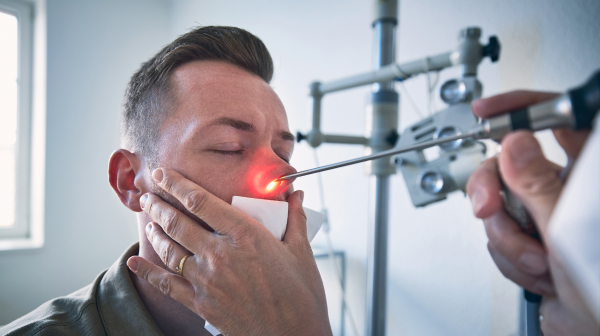

Fungal SinusitisFungal sinusitis is a broad term used to describe various situations when fungus might be involved in the cause or symptoms of nasal and sinus inflammation. Fungus can infect human beings like infections of the skin or toenails.
In the sinuses, fungus balls are responsible for causing allergic fungal sinusitis.
Fungal sinusitis is a broad term used to describe various situations when fungus might be involved in the cause or symptoms of nasal and sinus inflammation. Fungus can infect human beings like infections of the skin or toenails. In the sinuses, fungus balls are responsible for causing allergic fungal sinusitis.


Headaches and MigrainesHeadaches are best managed by a dedicated primary care physician or neurologist, here at Family ENT we can rule out sinus contribution to headaches by a detailed examination.
Headaches are best managed by a dedicated primary care physician or neurologist, here at Family ENT we can rule out sinus contribution to headaches by a detailed examination.


Loss of SmellCall our office for more information
Call our office for more information
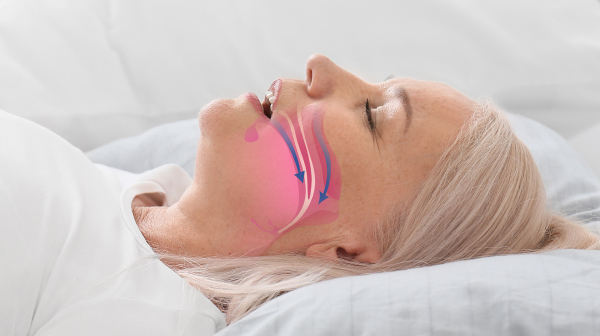

Nasal ObstructionThe inside of the nose is filled with a septum in the middle and turbinates on each side which act as air filters. If the septum is crooked (deviated) or the turbinates are swollen (hypertrophy), air will not flow freely through the nose which leads to nasal obstruction. If nasal sprays do not improve this symptom, surgery to straighten your deviated septum (septoplasty) and shrink your turbinates (turbinate reduction) can be beneficial. Other causes of obstruction can also be evaluated on exam, such as ruling out nasal polyps or masses.
The inside of the nose is filled with a septum in the middle and turbinates on each side which act as air filters. If the septum is crooked (deviated) or the turbinates are swollen (hypertrophy), air will not flow freely through the nose which leads to nasal obstruction. If nasal sprays do not improve this symptom, surgery to straighten your deviated septum (septoplasty) and shrink your turbinates (turbinate reduction) can be beneficial. Other causes of obstruction can also be evaluated on exam, such as ruling out nasal polyps or masses.


Nose BleedsOur nasal lining is very thin and contains large blood vessels under the surface. When this lining becomes irritated, the vessels can rupture leading to bleeding. Many times, pinching your nostrils and leaning your head forward can resolve the bleeding. If this doesn’t control the bleed, seeking medical help becomes necessary.
Our nasal lining is very thin and contains large blood vessels under the surface. When this lining becomes irritated, the vessels can rupture leading to bleeding. Many times, pinching your nostrils and leaning your head forward can resolve the bleeding. If this doesn’t control the bleed, seeking medical help becomes necessary.

RhinitisCall our office for more information
Call our office for more information
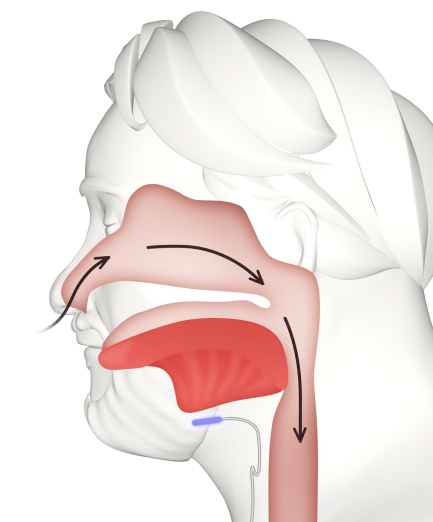
Now Offering The Inspire® Implant
Inspire is proven to be a safe and effective way to reduce the number of sleep apnea events people with Obstructive Sleep Apnea (OSA) experience each night by 79%.
When you’re ready for bed, simply click the remote to turn Inspire on. While you sleep, Inspire opens your airway, allowing you to breathe regularly and sleep peacefully.
Qualifications for Inspire:
- You are age 18 or above
- You have been diagnosed with moderate to severe Obstructive Sleep Apnea
- You are unable to use or get consistent benefit from your CPAP therapy
- Sleep study within the last 2 years
- Body mass index (BMI) of 35 or below

